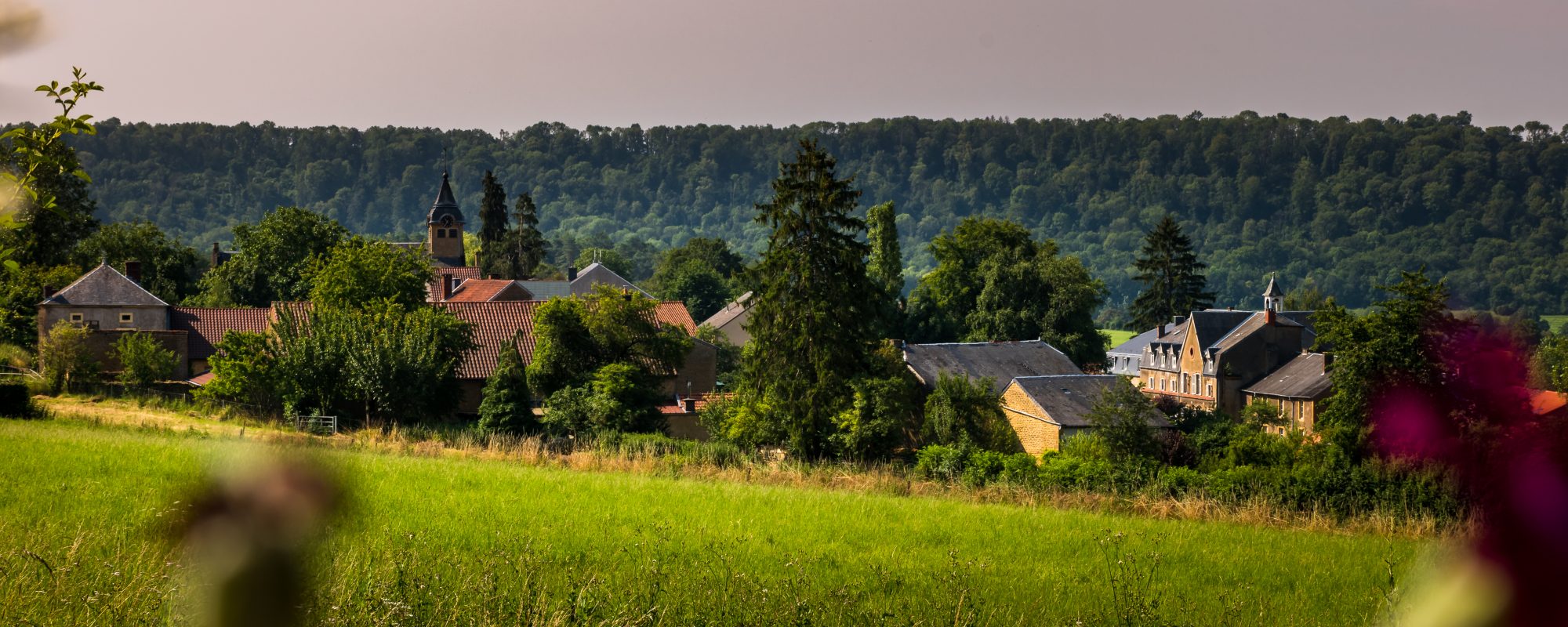Lorraine,Modelled by cuestas
The Lorraine region is the southernmost in Wallonia and is characterised by a succession of hills and depressions. This landscape, marked by a relief of “cuestas”,is its distinguishing feature.

The Lorraine region is the southernmost in Wallonia and is characterised by a succession of hills and depressions. This landscape, marked by a relief of “cuestas”,is its distinguishing feature.
This high plateau region, located in the south of the Ardennes, is punctuated by a succession of asymmetrical reliefs called “cuestas” resulting from the soil’s gradual erosion. Each cuesta (or hill) has a ‘front’ to the north, which is a short, steep hillside, and a ‘back’ to the south, which has a longer, gently sloping hillside.
In terms of landscape, the Lorraine is located in the highlands of Belgium. The region is punctuated by asymmetrical reliefs called “cuestas” resulting from progressive soil erosion. Each cuesta has a ‘front’ to the north, corresponding to a short, steep hillside, and a ‘back’ to the south, with a longer, gently sloping hillside. The front always overlooks a hollow developed in the softer rocks where a stream flows.
The arrangement of the Lorraine countryside is what is known as an Openfield model dominated by meadows. In the centre, the villages are surrounded by a ring of plots mainly used for meadows. These meadows uniformly cover the valley bottoms, which are made up of wet clay ground. Crops are most often grown on the gentle slopes of the hillsides, which are better-drained soils. The forests are located on the poor sandy soils of the cuestas, on the skeletal soils of the fronts or on the hillsides of some valleys.
The dwellings are grouped in dense villages, located at the foot of a ridge or on the reverse side of a cuesta. In this region, the strong agricultural constraints of the community have greatly limited the distribution of the dwellings. Village centres are often composed of semi-detached houses running parallel to the street. The doorways provide an open space to the road called an “usoir”, which gives rise to a so-called “village-street” structure in the landscape.
The traditional buildings of the Lorraine region are generally built out of calcareous sandstone. It is a soft, moisture-permeable stone that requires a protective plaster coating. The plaster can take on different shades depending on the raw materials used. In the streets, we can observe that the houses tend to get longer according to the owner’s wealth. The small two-section houses of the workers stand alongside the farmers’ three- or four-section farms.
The block houses of the region usually consist of two levels. The roof is in grey slate, sometimes finished with “croupettes” (a small sloping roof that joins the two main parts of the roof at their extremities, without descending as low as them). The croupettes are fitted to help ensure the roof’s stability and reduce the wind load on the gable.
The association Les Plus Beaux Villages de Wallonie (The Most Beautiful Villages of Wallonia) oversees a network of 32 villages, bearers of a strong territorial identity and reflecting traditional architecture. It is committed to promoting the rural, cultural and natural heritage of Wallonia and is a part of the development of local and responsible tourism.
More information